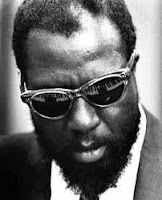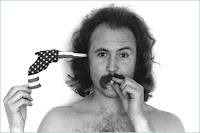So, R.E.M have come to a seemingly definite end this week with a career spanning retrospective, 'Part Lies, Part Heart, Part Truth, Part Garbage.'
News of their split some two months ago prompted a variety of responses from regret to zeal to the predictable 'I thought they'd split up ages ago'. For this fan, it was akin to hearing of an old girlfriend: one I'd given very little thought to in recent years but hearing of their passing transported me back to a time when they meant the world to me.
To understand my relationship with REM you would need to understand what they meant to certain music fans in the 80s. I'm not talking about REM as the U2-sized behemoth that 'Automatic' created. I make no bones about being primarily a fan of their early albums. For the best part of a decade they were the ultimate cult band. The best band in the world that most people hadn't heard of.
I remember very well the first time I encountered their music. Growing up in a decaying ex-mining town, cultural hotspots were few and and far between. Coalville Library was a typical municipal library in the 80s (and still is, probably): staffed by harassed middle-aged librarians, populated by the jobless and retired - all killing time. Yet its music section was a haven for many an aspiring young aesthete such as myself. The local record store, 'What Records', was fine but we couldn't afford to buy much. Like thousands of teenagers across the country at that time, our illegal downloading was borrowing LPs and home-taping. There wasn't much of a community spirit amongst us 'cool' kids that frequented the library. At best we might exchange respectful knowing looks across the LP racks. Anyway, one particular day in 1988 or 89 at said library, I found myself hypnotised by Bill Berry's eyes (and magnificent monobrow), staring back at me from a mysterious sepia tinged album cover.
I'd come across the name REM in the music press, but in those days I was primarily a Sounds or Kerrang reader, dipping into NME and Melody Maker on occasion. I knew nothing about them, just that they were revered by certain scribes. Everything about this LP intrigued me - the cover, the title, the mysterious band name, the curious song titles (Swan Swan H, Cuyahoga, The Flowers of Guatemala etc), the lack of band pictures or even full band member names - just Berry/Buck/Mills/Stipe songwriting credits. No lyric sheet, just what I later realised were bizarre lyric fragments on the back cover - "I found it. Miles Standish proud" ???
The first few plays didn't furnish many answers. There were more questions in fact - 'What on earth is he singing about?', 'Why is the track listing out of order?', 'What's this hidden track?' etc Yet, I was hooked. In many ways, 'Pageant' was the perfect introduction to REM for me. Coalville was very much a METAL town and I liked guitars - unashamedly. I'd dipped my toe into 'indie', but found the Smiths, Joy Division and most of the English alternative bands a little too fey. This was alternative rock that rocked. From the crunching opening riffs of 'Begin the Begin' and 'These Days' I knew I'd found my new favourite band. Of course, it was melodic and thought-provoking too, and 'Fall On Me' (below) remains one of my favourite ever songs.
Tracking back from 'Pageant', the off-kilter Americana of their first two albums 'Murmur' and 'Reckoning' was revelatory to me (still struggle with 'Fables of the Reconstruction' though). This was REM at their most enigmatic. And cool. Listening back to their albums the last few weeks, 'Reckoning' now stands out as my favourite over the more lauded debut: Harborcoat, Seven Chinese Brothers, So. Central Rain, Camera, Time after Time, Letter Never Sent (below). Brilliant. I don't think I ever wanted to be in a band as much as I did watching the short film 'Left of Reckoning' back in the day. And they were a band in the true sense of the word. Four friends who'd grown up in the same small town aspiring to do something creative but ultimately happy to be working in the local record store. This was definitely something I could relate to (and spent most of my life adhering to, come to think of it). To return to the girlfriend analogy, I was very much in love with this REM. That romantic love that characterises the beginning of a relationship where the world seems full of possibilities and wonder.
The later IRS albums are less magical more... direct and politicized. As admirable and polished as their final 'indie' album 'Document' is, in retrospect, it was a more difficult album to love. They'd lost a little of their mystique. This had become a serious relationship and there was something cold about this current phase. Many long-standing fans point to their major label debut 'Green' as the beginning of the end. Yet these were still exciting times to be a REM fan. 'Green' was the first 'new' album they'd released since I'd become a fan and there was more than enough of the old REM here to attract me. Yes, they were making more obvious inroads towards mainstream respectability in songs like 'Stand' and 'Pop Song 89'. And yes printing the lyrics to 'World Leader Pretend' heralded the beginning of a new openness on Stipe's part. But he remained an enigma, manicly miming through a megaphone during 'Orange Crush' on their Top of the Pops debut, never looking cooler than in the (gloriously dumb) 'Stand' video. I'm quite proud to admit that this was a look I tried to ape for about 5 years.
It was nearly three years before their next release, 'Out of Time'. The single that heralded this comeback, 'Losing My Religion', was ultimately something of a disappointment to me. The mysterious messianic Stipe had moved much further towards mainstream popstar status. Here was the new Bono - impersonation on 'Stars In Their Eyes' was swiftly to follow. Worse still, he'd cut his hair short. It could be argued that REM's artistic decline can, Samson-like, be charted back to this moment.
'Out of Time' was, I think, the first 'new' album I bought on cd. I mention this because in some ways there are parallels. The problems I have with much of that album are criticisms that were levelled at that still new format: it's too clean, clinical, polished. The self-consciously hip 'Radio Song' typifies this - it has dated very badly. And don't get me started on 'Shiny Happy People'. And yes, I know it's a piss-take! Furthermore, the move towards less oblique lyrics that was begun in earnest on 'World Leader Pretend' was completed here. Songs that made obvious sense, with lyric sheets! How dare they! Didn't Stipe realise that trying to 'divine his deeper motives' was part of the fun? Still the album had moments of loveliness, like 'Half A World Away' and the sublime 'Country Feedback' (below).
The three years between 'Green' and 'Out of Time' had seemed like an eternity to me. And therein lies the real problem, not Stipe's hair or the songs so much. I'd gone from 17 to 20. I'd been to university. I'd discovered jazz. And girls (although they didn't discover me for a while longer...). I'd outgrown REM a little. I guess 'Out of Time' was a little out of time for me, and if my religion wasn't lost, my faith was certainly wavering. Still, I did get my hair cut short...
'Automatic for the People' is where it gets problematic for me. I was still excited by the prospect of a new REM album, but, if I was lukewarm to 'Losing My Religion', I hated Automatic's lead single, 'Drive', with a passion. It seemed so... obvious, so overblown. I didn't buy the album (and I'll confess that I haven't bought an REM album since). Borrowing it off a friend, I taped a copy, sans 'Drive', which made it much more palatable. Again, there were moments of loveliness, primarily 'Find The River', but something had definitely changed for me. These were very explicit songs, compared to the early IRS albums. In writing more direct lyrics much of the mystery had gone from the band. To return to the girlfriend analogy, it was now like seeing her without her make-up on, and not liking what you see... So I moved on. But so did she, with a new look, now courting favour from boys who'd mocked my love just a few years previously. No hard feelings then, on either side.
I spent most of the next two decades working in record shops and heard the subsequent albums as they were released. There were songs I still liked from 'Monster', 'New Adventures' and 'Up'. But it wasn't the same. 'Reveal' and 'Around the Sun' seemed very poor indeed and by this time I'd lost all interest. I'd barely given them a thought in the last few years. As for many, it was only with the news of their demise that I've gone back to those songs and times that I loved.
At the height of my REM mania, a friend of mine produced an REM fanzine where contributors would publish their interpretations of those early songs. One issue gave away a flexi-disc featuring a lost REM classic 'Tainted Obligations', a gorgeous song that seemed to come out of nowhere without explanation, like a gift from the gods. To this day it is one of my favourite songs and I wanted to end this blog with it, as its mystery seemed to encapsulate my feelings towards the band in those early years. Bizarrely, yet somehow appropriately, 'Tainted Obligations' seems to elude internet search engines. Enigmatic to the end then. The one thing I have gleaned is that it isn't an REM song at all, but a Michael Stipe/Michael Sweet collaboration called the Community Trolls. This seems somehow fitting; part lies, part truth, part heart, part garbage indeed.






















